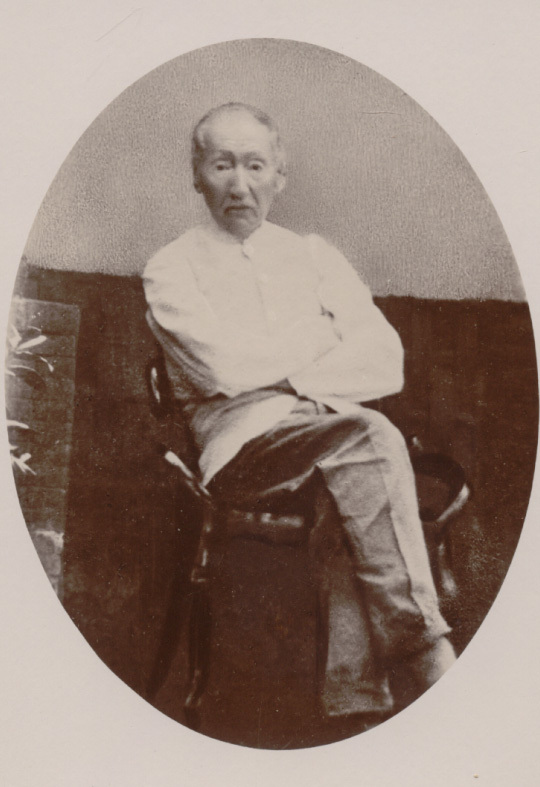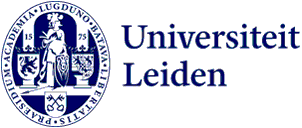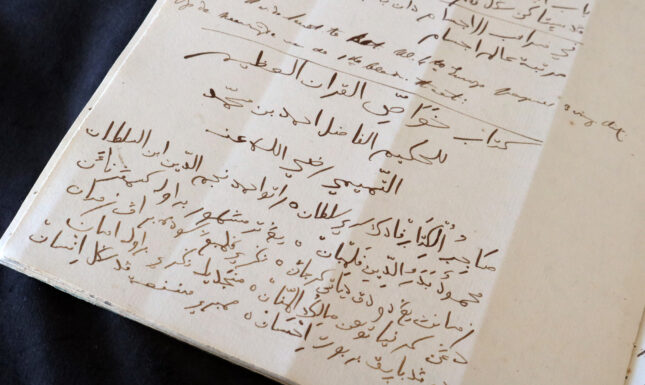Tracing the lost Royal Manuscripts of Palembang
During the 19th century colonial wars the library of the rulers of Palembang in Sumatra was looted by British and Dutch troops; its manuscripts were transported to other places and some of them are lost. Alan Darmawan visited Leiden to look for traces of some of these mishandled treasures.


In 1812, when the Napoleonic wars raged in Europe, the British attacked Palembang. Through the hands of military commanders like Captain William Fitzwilliam Owen and Thomas Stamford Raffles a part of the Palembang collection ended up in the United Kingdom. Between 1819 and 1825, when the Dutch tried to reestablish their influence in Sumatra, a series of wars led to another dispersal of the manuscripts. Among those who collected the royal manuscripts of Palembang was J.J. van Sevenhoven who was commissary in Palembang between 1822 and 1823. He hunted for the treasures of Sultan Mahmud Badaruddin II (r. 1804–1812), ransacked the houses of the nobles, and confiscated 55 manuscripts that he sent to the Department of Native Affairs of the General Secretariat of the Netherland East Indies in Batavia.
Here they were inspected by the linguist and bible translator Herman Neubronner van der Tuuk in 1850-51. During a short visit he described 22 Palembang royal manuscripts. Seven of these were later transferred to the Batavia Society, and are now kept at the National Library of Indonesia (PNRI). The remaining 15 volumes are missing, and all we know about them is from Van der Tuuk’s notebooks, that are preserved in the Leiden Special Collections (Or. 3300 and Or. 3301). By the 1880s, none of these manuscripts remained, due to, as Van der Tuuk noted, “empty amateurism and indifference” in handling them.
Figures 2-3: Van der Tuuk’s notes on the Kitāb khawāṣṣ al-Qurʾān. Leiden University Libraries, Or. 3301, p. 24-25.
We can judge the quality of Van der Tuuk’s work by comparing his notes about the Kitāb khawāṣṣ al-Qurʾān, which is now at the National Library of Indonesia. Van der Tuuk made an identical copy of the title page, which contains the title in three lines and information about the commissioning of the copy, which is found in five verses of poetry. It informs us that the copyist was Kemas Fakhruddin who completed the task for “Sahibul kitab Paduka Sri Sultan / Ratu Ahmad Najamuddin ibn Sultan / Mahmud Badaruddin Palimban / yang termasyhur beroleh kesempurnaan,” or “The owner of the book, His Majesty Sultan / Ahmad Najamuddin, son of Sultan / Mahmud Badaruddin of Palimban / who was renowned for accomplished perfection.”


An example of a manuscript that is now lost is the Kitab Bintang, a text on astronomy. Van der Tuuk’s note (Figure 5) recorded the title and the owner of the manuscript:
Alamat Surat Bintang Sri Paduka Pangeran Ratu ibn Sultan Muhammad Baha’uddin ibn Sultan Susuhunan Ahmad Najamuddin ibn Sultan Mahmud Badaruddin ibn Sultan Muhammad al-Mansur ibn al-Sultan Susuhunan Abdul Rahman, tamma.
Translated as:
Sign of the Book of Astronomy of His Majesty the Crown Prince, son of Sultan Muhammad Baha’uddin son of Sultan Susuhunan Ahmad Najamuddin son of Sultan Mahmud Badaruddin son of Sultan Muhammad Mansur son of Sultan Susuhunan Abdul Rahman, finis.


Van der Tuuk’s notes and summaries help to reconstruct part of the collection of the royal library of Palembang. They serve a basis for researching manuscript provenance, genres and languages of texts copied and read—in other words, they allow us a rare glance into the literary and intellectual culture of Palembang in the past.
About the author:
Dr Alan Darmawan is Postdoctoral Researcher on the Leverhulme Trust-funded project Mapping Sumatra’s Manuscript Cultures at SOAS University of London. This piece is based on his stint in Leiden as a Scaliger Visiting Fellow at the Leiden University Library in early 2024.




